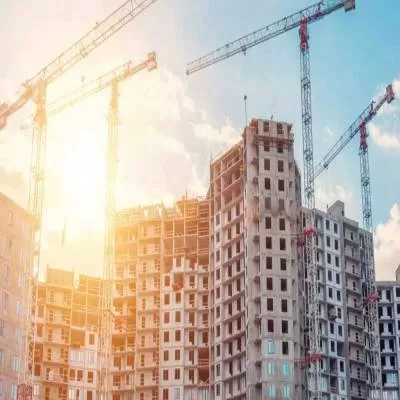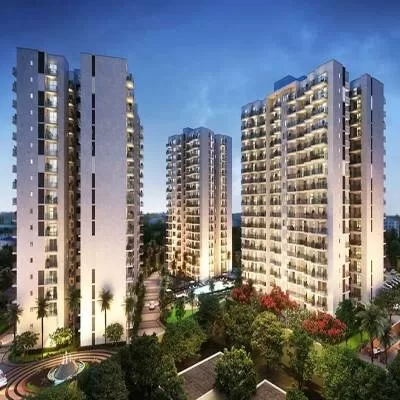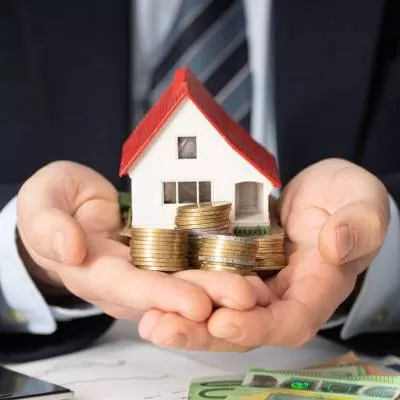- Home
- Real Estate
- The only way is up

The only way is up
<span style="font-weight: bold;">Growth across overseas and Indian brands, components and retrofits marks the Indian elevator industry</span> <p></p> <p> India is the world's second-largest market for elevators and escalators, behind China, with elevator demand expected to stand at 49,000 units at the end of this year, according to <span style="font-weight: bold;">Sebi Joseph, President, Otis India.</span></p> <p>'We expect the market for elevators and escalators to expand from 55,000 units in 2017 to 57,570 in 2018,' predicts Bharat Vishnani, Managing Director, thyssenkrupp Elevator (India).</p> <p>'The market for elevators and escalators is at an all-time high and we see it growing further,' says <span style="font-weight: bold;">R Mohamed Finan, Chief Executive, Sales & Marketing, Alfa Elevators. </span>'With elevators becoming a necessity, new companies are entering the market.'</p> <p>Good growth in the elevator market is spurring the domestic sourcing of key components from product and system specialists, says <span style="font-weight: bold;">Nakul Mehta, Managing Director, Bharat Bijlee.</span> Developer and manufacturer of India's first permanent magnet synchronous motor brand for gearless elevators, the GreenStar range, the company has been seeing year-on-year growth both from the domestic industry and export market. 'We expect the Indian elevator market to grow at 8-10 per cent annually for the foreseeable future,' adds Mehta.</p> <p> <span style="font-weight: bold;">Demand drivers</span><br /> Growth is being driven by the elevator's evolution from a luxury product to a functional and efficient means of moving people, with safe and energy-efficient elevators taking centre stage, says Vishnani. </p> <p>Urbanisation and the growing number of tall buildings are growing India's elevator industry, says Joseph, who expects no let up in these drivers as the proportion of people living in cities will increase from 30 per cent now to 40 per cent of the population by 2030. </p> <p>Urbanisation and the government's Smart Cities initiative is pushing demand for elevators, as per Mehta.</p> <p>'With owners of G+1 or G+2 homes interested in installing elevators, we expect the market to grow by 10 per cent in the next two years,' says <span style="font-weight: bold;">Vinay Agarwal, Director, Kohinoor Elevators, Jaipur.</span></p> <p> <span style="font-weight: bold;">Popular models</span><br /> Today, double-deck elevators and 'TWIN' elevators meet the fast and energy-efficient transportation needs of high-rise buildings while machine room-less traction elevators having their motor and other equipment fitted into the hoist way are one of the most energy-efficient elevators for mid-rise buildings, shares Vishnani.</p> <p>He adds that demand is also growing for high-speed, high-capacity smart elevators, particularly from high-rise office buildings, commercial complexes and other large-scale facilities. 'These gearless machines can cut energy consumption by up to 30 per cent compared to conventional geared machines, and have a regenerative drive feature to further reduce energy consumption by up to 15 per cent.'</p> <p>Interestingly, Bharat Bijlee has seen accelerating penetration of its product into the conventional geared space, as Indian home-grown elevator companies overcome their initial discomfort and resistance to the new technology.</p> <p>'Recently, we have seen increased demand for 'green' elevators,' says Joseph, who attributes this to the 4.5 billion sq ft (across over 4,000 buildings) of green real estate under development registered with the Indian Green Building Council (IGBC) in March 2017. </p> <p>Buildings are estimated to consume about 40 per cent of the world's energy, and elevators can account for up to 10 per cent of a building's energy use, notes Mehta. With growing awareness of green building design and the savings to be made from green technologies over the life-cycle of buildings, demand for green elevators is at a high. 'Green elevators feature gearless motors, regenerative drives and control systems with algorithms that precisely manage traffic, motor speed, cabin lighting, and other parameters while optimising handling capacity,' he elaborates. 'Also, the elevator system manufacturer's processes, logistics and choice of materials can contribute to a lower overall carbon footprint over the elevator's life-cycle, as can remote monitoring capabilities.'</p> <p>Otis' Gen2 equipment and ReGen drive technology support green buildings by jointly cutting energy consumption by 75 per cent under normal operations compared to conventional geared machines with non-regenerative drives.</p> <p> <span style="font-weight: bold;">Home elevators</span><br /> To integrate easily into existing or new structures, home elevators come with or without shafts, with no pit, no hoist and no headroom options, in diverse sizes and cabin decors, for indoor or outdoor applications, as Vishnani tells us. Also, they stand out for being compact and consuming about as much energy as a household appliance using 230-v, single-phase supply.</p> <p>Despite this variety, sometimes what is available does not fit a customer's needs. Then, Indian brands can step in to offer custom-built elevators of the required size or decor at an affordable price. </p> <p>'Local elevator brands are about 10 per cent less expensive than overseas brands,' says Agarwal. 'Also, our customised solutions - like a single-person structure technology for a customer having a G+1 home with no space for lift installation - are nominally priced.'</p> <p> <span style="font-weight: bold;">Customised solutions</span><br /> Alfa Elevators primarily counts residences and unconventional structures - like nuclear reactors and statues where the shaft is not of a conventional size or shape - among its clientele. 'We deliver detailed tailor-made vertical transportation solutions to fit an elevator on a shaft of any size, even miniature lifts to fit 3 x 3 spaces, unlike the mass-produced, standard-sized products of overseas branded elevator companies,' says Finan. 'We thrive on technically challenging unconventional projects and high-end luxury elevators. </p> <p>And being a comparatively smaller company, we enjoy a price advantage from incurring lower overhead costs.' According to Finan, customisation could cover integration with a home automation system, fingerprint or biometric access and aesthetics so that the elevator's decor complements the interiors in antique iron finishes, marble, wood, curved glass, etc. 'We also custom-create elevator cars with up to three doors for multiple side access to avoid civil modifications, and energy-saving hydraulic elevators consuming almost 45 per cent less power than conventional traction elevators,' he adds.</p><br /> Evidently, the sky's the limit! <p></p> <p> <span style="font-weight: bold;">QUICK BYTES</span><br /> </p> <ul> <li>India is the world's second-largest market for elevators and escalators.</li> <li> Market to expand from 55,000 units in 2017 to 57,570 units in 2018.</li> <li> Increased demand for high-speed, high-capacity smart elevators: Can cut energy consumption by up to 30 per cent.</li></ul> <p> How to Identify the Optimum Number and Type of Elevators for a Building<br /> A building will need x number of elevators of a y size and z speed, depending on its design, the usable area per floor, the number of floors and the floor height, the population to be served and the expected passenger waiting time.'<br /> <span style="font-weight: bold;">- Bharat Vishnani, Managing Director, thyssenkrupp Elevator (India)</span></p> <p> We consider the floor FSI in deciding on the size of elevators. We look to include not more than four to six lifts in commercial buildings with multiple tenants, such than one elevator can be demarcated for senior employees. As for positioning, heavy-duty elevators work best in the centre of commercial buildings with FSI more than 10,000 sq ft so that all the offices can enjoy an outer view. Residential buildings usually need two to three elevators at most, with a side maintenance lift for tall buildings.' <span style="font-weight: bold;">- Ateet Vengurlekar, Principal Architect and Interior Designer, Blue Arch Interiors & Architects </span></p> <p> Traffic analysis is based on the expected occupancy of a building and the recommendations of the National Building Code 2016. For instance, the installed elevators must be capable of handling 10-15 per cent of the occupants of a diversified tenancy office building in five minutes, 15-25 per cent of the occupants of a single occupancy building and 5 per cent of the occupants of residential buildings. For our residential six-tower project Paarth Aadyant in Lucknow, we improved upon the relevant provision by ensuring a passenger handling capacity (in five minutes) of 7.5 per cent of the occupants of residential buildings. We also adhere to the accepted round trip time, the time the elevator takes to serve the most probable number of floors, and the average passenger waiting time norm, which varies from 20-25 seconds to over 45 seconds for commercial buildings and intervals of up to 90 seconds for residential buildings.' <span style="font-weight: bold;">- S N Tripathi, General Manager, Services Design, Rudrabhishek Enterprises</span></p> <p> Analyse Elevator Traffic Early in a Building's Life-cycle<br /> Traffic analysis specialists should ideally be engaged early in the life-cycle of a building. For instance, Otis's team got involved at an early stage with the Indiabulls BLU ultra-luxury residential project in Worli, South Mumbai.</p> <p>To fully cater to the occupants of the sea-facing apartments, Otis helped reckon the speed and interiors for 18 SkyRise elevators. Based on discussions and in line with local codes, the premier high-rise system with speeds of 4 m per second was found suitable. SkyRise is optimal in design and has a regen drive by default. Regen drives reduce energy usage by up to 75 per cent compared to non-regenerative drives. The elevators' CompassPlus destination dispatch is based on Otis's patented Smart Grouping technology to group passengers and stops to serve people up to 50 per cent faster than conventional dispatching systems and with 27 per cent greater energy-efficiency. CompassPlus helped immensely in achieving a unique elevator layout, a lobby design of 'Z' shape. To speed up installation and cut associated costs, a scaffold-less methodology was opted for.</p> <p> <span style="font-weight: bold;">Modernise Existing Elevators</span><br /> Existing elevators that are even 10-15 years old can be made more energy-efficient and cost-effective by being upgraded with the latest technology, parts and components, says Bharat Vishnani, Managing Director, thyssenkrupp Elevator (India). 'As long as the elevator's basic mechanism and structure is sound, upgrading the motor from a geared model to a gearless model, upgrading the controllers, installing a regenerative drive, LED lights and sometimes even expanding the floor area if there is extra room in the shaft, can completely modernise an existing elevator.'</p> <p> <span style="font-weight: bold;">Ask for these Elevator Safety Features</span><br /> Safety is the most important feature in an elevator, says S N Tripathi, General Manager, Services Design, Rudrabhishek Enterprises. Safety features can include:<span style="font-weight: bold;"><br /> </span></p> <ul> <li><span style="font-weight: bold;">Automatic rescue device: </span>To protect passengers from being trapped inside elevators. In the eventuality of unexpected power outages, they are taken to the nearest floor.</li> <li><span style="font-weight: bold;">Over-speed governors:</span> To prevent speeding in both directions.</li> <li><span style="font-weight: bold;">Load-weighing safety device:</span> This overload detector alerts passengers to overcrowding. </li> <li><span style="font-weight: bold;">Gradual activation of progressive safety gear:</span> To stop the elevator safely if the need arises, thus reducing passenger falls.</li> <li><span style="font-weight: bold;">Full-height infrared curtains: </span>To create an invisible safety net of beams across elevator entrances to ensure passengers are not hit by door edges while getting in or out of the elevator.</li> <li><span style="font-weight: bold;">Safe-door systems:</span> To prevent doors from opening when the elevator is between floors.</li> <li><span style="font-weight: bold;">Emergency alarm and two-way communication system: </span>To alert a helpdesk and call for help. </li> <li><span style="font-weight: bold;">Seismic switch: </span>A device to return the elevator to the nearest floor if the preliminary waves of an earthquake are detected.</li> <li><span style="font-weight: bold;">Pit safety switch:</span> A limit switch strategically located at the elevator pit entry and exit to prevent unexpected elevator movement for the safety of maintenance personnel working in the pit.</li></ul> <p><span style="font-weight: bold;">-Charu Bahri</span></p> <p>To share your views on the Elevators and Escalators market in India, write in at feedback@ConstructionWorld.in</p>




















